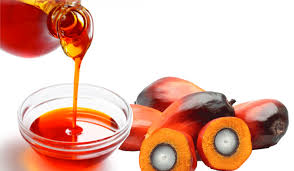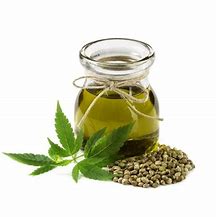Palm Kernel Oil





Palm Kernel Oil
LATIN NAME: Elaeis guineensis
FAMILY: Palmaceae
ETHYMOLOGY:Guineensis is the Latinized form of Guinea, in tropical West Africa.
The Plant and its Environment
A solidly built, tall (15-30 metres, 50- 100 feet) palm, which grows wild in Nigeria, is native to West Africa, and is now grown also in other areas near the equator, (ie between 10 degrees north and 10 degrees south) for example in the East Indies and in Brazil.
The wild palm does not produce oil until approximately 15 years old, unlike the cultivated variety which yields fruit at 4 years, and is smallish when young so that climbing it is not necessary until the tree is about 12 years old. The fruit grows at the top among the fronds in bunches of about 15-18 Kg containing 700-900 palm fruits. The thin yellow to reddish skin covers the pulpy pericarp which yields palm oil; this is chiefly used for soap making, although an edible oil is now produced in modern plantation mills.
The Oil
Palm kernel oil is obtained from the kernels, taken from the cracked nuts and usually exported to and processed in Europe (this first happened in 1850):the palm kernel oil is used mainly as an edible oil, but is also used in soaps. The kernel yields an oil greatly different from that extracted from the fleshy pericarp. The ripe fruits also are expressed to yield palm oil; both oils are solid in temperate climates (Bruneton 1995). Palm oil contribute about 20% of the world oil production.
Principal constituents - Palm kernel oil
| FATTY ACID | % |
| C8:0 | 2.4-6.2 |
| C!0: | 2.6-5 |
| C12:0 | 41-55 |
| C14:0 | 14-18 |
| C16:0 | 6.5-10 |
| C18:1 | 12.19 |
| C14:0 | 0.5-2 |
| C16:0 | 41-47 |
| C18:0 | 5.5-6 |
| C18:1 | 36-44 |
| C18:2 | 6.5-12 |
Therapeutic Properties and Uses
Pal kernel oil resembles coconut oil in its constituents, properties and application. Palm oil is used with the seeds of Physostigma venenosum (Fabaceae) to kill lice (Duke 1985).
Reference:Carrier Oils for Aromatherapy & Massage: Len Price with Ian Smith & Shirley Price
Articles-Most Read
- Home
- Contact Us
- Coconut Oil-2
- Absorption Ratings for Carrier Oils
- Cold Pressing Method
- What are Essential Fatty Acids
- Cherry Kernel Oil
- Fixed Oils and Skin Penetration
- Hempseed Oil
- Almond Oil
- Cocoa butter
- Camelina Oil
- Coconut Oil
- Antibacterial Effects Of Carrier Oil
- Lime Blossom Oil (macerated)
- Carrot Oil, Wild Carrot Oil (macerated)
- Apricot Kernel Oil
- Kukui Nut Oil
- Jojoba Wax
- Pumkin Seed Oil - Cucurbita maxima, C. pepo
- Passion Flower OIl (Macerated)
- Hydrocotyle Oil (macerated)
- Rapeseed Oil - Carrier Oil
- Palm Kernel Oil
- Nutrients
Who's On Line
We have 75 guests and no members online
Articles-Latest
- How to Make Homemade Olive Oil: A Step-by-Step Guide
- 20 Evidence-Based Aloe Vera Oil Benefits For Skin, Hair & Health
- Peanut oil - Cold pressed - Are There Health Benefits? How To Make
- What Are the Health Benefits of Black Seed Oil?
- Comfrey oil Infused
- Chamomile Flowers Infused Oil
- Calendula Flowers Infused Oil
- Arnica Flowers Infused Oil
- How To Make Herb-Infused Oils
- DIY avocado oil for healthy skin
- How To Make Coconut Oil
- 8 Benefits of Mustard Oil, Plus How to Use It
- SHOREA STENOPTERA SEED BUTTER
- Shea Butter- 7 Amazing Benefits Of Shea Butter
- Monoi Oil For Hair & Skin
- Mango Seed Oil
- Cohune Oil Is The Next Big Thing
- Brazil Nut OIl
- 7 Impressive Benefits Of Allspice
- Camelina Oil Benefits, Uses, and Side Effects




